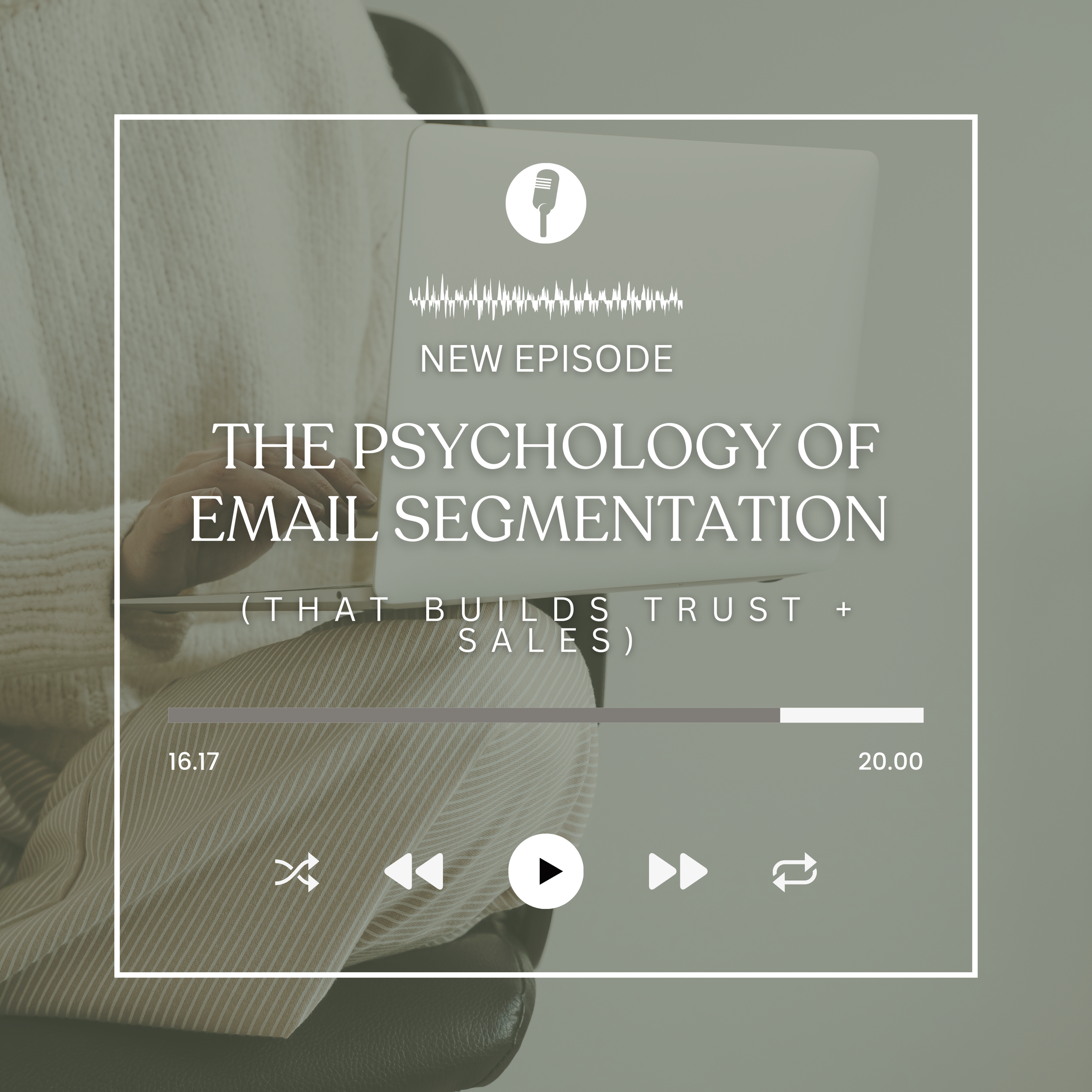The Psychology of Email Segmentation (That Builds Trust + Sales)
If you’ve ever wondered why your email list feels disengaged—or why your subscribers stop opening and eventually ghost your list—the answer may be simple: your emails aren’t speaking to the individual.
Email segmentation is one of the most powerful, yet underutilized strategies in marketing. Instead of treating your list like a crowd, segmentation helps you communicate with your audience like a community—meeting them exactly where they are in their journey.
In this post, I’ll break down:
Why one-size-fits-all emails are costing you conversions
How quizzes and resource-based emails naturally segment your list
Real-world examples of follow-up sequences that build trust and boost sales
Why One-Size-Fits-All Emails Cost You Conversions
Sending the same newsletter to every subscriber assumes they’re all at the same stage in awareness, buying behavior, and needs. But that’s rarely the case.
Here’s what happens when you blast the same message to everyone:
Past clients see offers for things they’ve already purchased → trust erodes.
Beginners feel overwhelmed by advanced strategies → they disengage.
Advanced subscribers feel underwhelmed by basic tips → they unsubscribe.
Instead, think of segmentation as creating a dinner menu for your guests. You wouldn’t serve steak to vegans, and you shouldn’t send the same offer to every person on your list.
Segmentation honors the reality that your audience is diverse—and when people feel seen, they engage more and buy more.
How Quizzes Naturally Segment People
Quizzes are one of the simplest and most effective tools for segmentation.
Why? Because they’re:
Fun and engaging → people love discovering something about themselves.
Self-selecting → subscribers put themselves into buckets (no guessing required).
Scalable → one quiz can create multiple pathways into your email ecosystem.
Example:
A business coach runs a “What’s Your CEO Superpower?” quiz.
Visionary types get nurture emails about big-picture thinking.
Operators get systems-focused content.
Creators get strategy around ideas and innovation.
Each subscriber instantly feels like the emails were written for them.
Other Natural Ways to Segment Your List
Not every business is ready for a quiz, and that’s okay. Here are a few low-tech strategies:
1. Resource Dumps
Send an email offering multiple resources on different topics, but let subscribers choose what’s relevant. Their clicks tell you exactly what bucket they belong to.
Example: A fertility coach might share resources on hormone balance, egg quality, or IVF. Subscribers “vote with their clicks,” giving you valuable segmentation data.
2. Filter Questions in Opt-Ins
Add one simple multiple-choice question to every opt-in form.
Examples:
Dietitian: “How many dinners do you currently cook at home per week?”
Web developer: “Is your site currently generating leads? Yes/No.”
These micro-questions give you segmentation data from the very first interaction.
3. Lifecycle Segmentation
Build checkpoints into your customer journey. For example:
A pregnancy-related business can re-segment subscribers at 9 months postpartum.
A SaaS company can tag users as “new,” “active,” or “churn risk” based on activity.
Final Thoughts
Segmentation doesn’t have to be complicated or tech-heavy. Even small steps—like excluding past buyers from certain promos or adding a single filter question—create more trust with your audience.
Remember:
Generic emails = disengagement.
Segmentation = relevance.
Relevance = trust + conversions.
Start with one small segmentation step this week, and watch how your audience leans in.
Call to Action
If you’re ready to create segmentation strategies that feel natural and authentic, try:
Adding a filter question to your next opt-in.
Testing a “resource dump” email to see where your audience self-selects.
Exploring how a quiz could fit into your funnel.
👉 DM me on Instagram @gal.agency and share your ideas—I’d love to cheer you on!
And if you want to dive deeper, grab the Align Leads Formula before it evolves into the new program.

